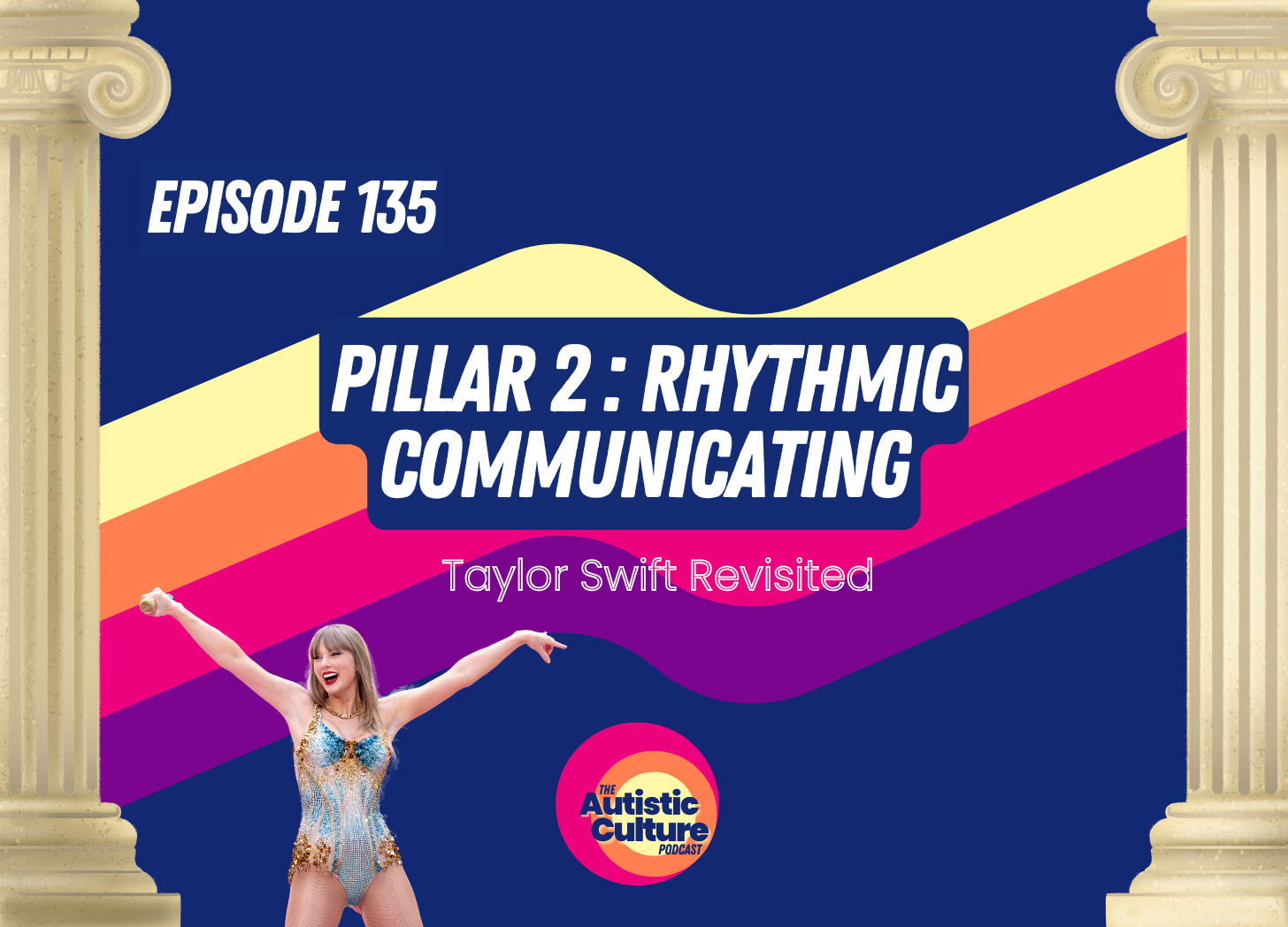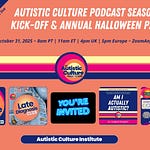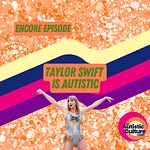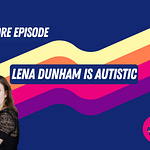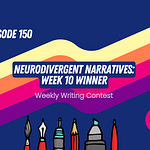An episode that explores a core expression of how autistic people interact with the world and one another.
In Episode 135 of The Autistic Culture Podcast, Dr Angela Kingdon continues our journey through the 10 Pillars of Autistic Culture as we move onto Pillar 2— Rhythmic Communicating. Here’s what defines this core Autistic trait:
🗣️ Echolalia: Repeating things you’ve heard — could be from a show, another person, or even yourself. It can happen right away or much later.
🔄 Palilalia: Repeating your own words or phrases, often without meaning to. Sometimes it speeds up or gets softer as you go.
🎭 Scripting: Using lines from movies, shows, or past conversations to communicate or handle social stuff. It’s like having go-to phrases ready.
🤓 Infodumping: Talking a lot (and in detail) about something you're super into. It might be a one-way info blast, but it’s done with passion.
🪞 Echopraxia: Copying other people’s movements or gestures, sometimes without realizing it. Like mirroring someone’s body language.
🌀 Mazing: Telling stories or explaining things in a roundabout way — lots of tangents, loops, or detours before getting to the point (if ever). Autistic communication
It’s often musical, patterned, and poetic, following its rhythm and flow. This style isn’t “off”; it’s layered, intentional, and deeply expressive. The so-called “autistic accent” — our pacing, tone, gestures, eye contact, and speech patterns — isn’t a social flaw, it’s a cultural vibe. What sounds “weird” to others is often rooted in sensory joy, linguistic precision, or scripted comfort.
🎙️ What you’re about to hear is a special remastered episode from our archives — perfect for Pillar 2: Rhythmic Communicating. This episode doesn’t just talk about language — it lives inside it.
💭 As you listen, ask yourself:
What if this is what beautiful communication sounds like?
What if rhythm, repetition, and emotional precision are not quirks to fix, but forms to celebrate?
What to listen for through the lens of rhythmic communication:
🎤 Lyrical scripting – Taylor Swift uses structured lyrics, poetic motifs, and callbacks to express emotion. Repetition and metaphor = cultural fluency, not just style.
📚 Hyperlexia meets infodumping – From childhood writing to Easter eggs and liner notes, Taylor info-shares with love and detail — autistic intimacy in action.
🌀 Mazing and tangents – Her storytelling spirals, loops, and circles back. Think folklore and evermore — this is an autistic narrative style at its finest.
🗣️ Voice as rhythm – Songs like “Shake It Off” use rhythm to ground and energize. It’s more than catchy — it’s a stim anthem.
🕺 Stimming and vocal play – In interviews and docs (like Miss Americana), Taylor bounces, scripts, giggles, and flaps — classic joyful stimming.
🪞 Emotional echolalia – Recurring lyrics like “I can change everything about me to fit in” echo across albums. This mirrors how autistic folks process emotion through repetition.
🖼️ Visual scripting in media – Her aesthetic choices follow structured patterns. Just like scripting conversation, but in color, costume, and camera work.
🎤 Autistic accent through performance – Her tone, pacing, and stylized speech aren’t awkward — they’re rhythmic, deliberate, and expressive.
🫶 Patterned speech as relationship – Fans speak in Taylor-coded language (e.g., Easter eggs, quotes). It’s the same way many autistics build connections.
🎼 Genre as grammar – Taylor uses each musical genre as a unique emotional language. Every album is like its own communication style.
As you listen and pay attention to the rhythmic communication pillar with deeper context, I want you to ask yourself: What if this is what beautiful communication sounds like? What if rhythm, repetition, and emotional precision are not quirks to fix, but forms to celebrate?
You don’t have to be a Swifty to see it. But you do have to listen for the rhythm. And once you do, you might never hear her the same way again.
So, whether you’re autistic, exploring the possibility, or just someone who loves and respects autistic people, you are welcome here.
We’re saving you a seat!
This episode is a part of our Start Here Series, which is designed for new listeners of the show who are wondering, “where should I start?” to have a solid foundation for their experience here. It’s also for loyal listeners to begin to more fully embody the pillars of Autistic culture with more clarity and pride. Join the convo with #AutisticCulture!
Resources:
Deaf President Now documentary: The story of the great civil rights movement most people have never heard about. During eight tumultuous days in 1988 at the world's only Deaf university, four students must find a way to lead a revolution and change the course of history.
Related Episodes:
Eminem – Lyricism, speed, repetition, verbal rhythm that mirrors echolalia and hyperverbal stimming. (Ep 19)
Shakespeare – Structured verse, iambic pentameter, and dramatic scripting that resonates with autistic communication styles. (Ep 109)
They Might Be Giants – Lyrical loops, wordplay, and repetition. (Ep 119)
Fern Brady – Autistic stand-up comic with direct delivery and layered scripting. (Ep 54)
Sonic the Hedgehog – Rapid, rhythmic speech and high sensory pacing. (Ep 111)
Monster High – Scripted interactions and exaggerated vocal styles reflect patterned social cues. (Ep 117)
MST3K – Running commentary, media scripting, and looping voice humor. (Ep 83)
Rick and Morty – Stammering, scripting, repetition, and tangents are central to character design. (Ep 70)
Animation & Voice Acting – Characters who rely on distinctive scripted voices and expressive pacing. (Ep 32)
Follow us on Instagram.
Find us on Apple Podcasts and Spotify.
Learn more about Angela at AngelaKingdon.com
Our Autism-affirming merch shop




